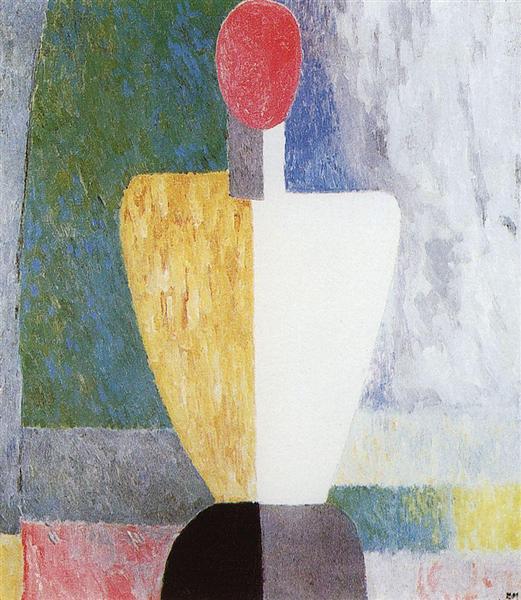Description
In the work "Torso 1929," Kazimir Malevich displays a master synthesis of his artistic and philosophical research, placing this painting At the intersection between the suprematism that he defended so much and the human figure that often seemed absent in his work corpus. If we stop to observe this painting, we immediately notice the abstract representation of the human form, a fact that resonates strongly in an artistic career dominated by pure geometric abstractions.
The sobriety and the economy of media that characterize "torso" reveal one more commitment to the essentials than for the anecdotal. He painting It focuses on the construction of a human body composed of simple geometric shapes. The torso, divided into flat colored blocks, is treated almost as an architectural structure. The colors play a predominant role here: oranges, yellow and blue not only fragment the body but also suggest an internal energy, a latent dynamism under the apparent stillness of the figure.
Although painting lacks realistic details, allusion to the human figure is unequivocal. The extreme simplification of the proportions and colors refers to an effort to strip the reality of the superfluous, a cardinal principle of suprematism that Malevich articulated clearly in his writings. There are no indications of a particular identity or a specific story in this torso; It is, rather, an essentialization of the human, a stylized archetype beyond time and space.
It is worth mentioning that, at the time when this painting was performed, Malevich was sailing a difficult personal and artistic transition. The pressure of the Soviet regime had forced him to move away, to some extent, from his most radical experiments in suprematism to adopt a style that could be more "acceptable." However, "Torso 1929" reveals how, even under these circumstances, the artist maintained his vocation to explore the elementary shapes and nuances of color.
The interaction between the color areas and the hard edges of the shapes is worthy of a deeper inspection. Malevich here seems to dialogue with its own legacy, reintroducing the human figure not as a return to the past, but as a reconfiguration of it in abstract terms. This work can be read as a meditation on the limits and possibilities of artistic representation, a reflection on what it means to be human in a world redefined by lines and colors.
In "Torso 1929," Malevich not only raises a question about the nature of the human figure, but also suggests an answer through a minimalist and abstract aesthetic. The painting becomes a melting pot where their ideas about art and existence converge, intertwining form, color and concept in an inseparable whole. It is, in short, a work that invites to be contemplated and rethical, a testimony of the unwavering innovative spirit of one of the great masters of the twentieth century.
KUADROS ©, a famous paint on your wall.
Hand-made oil painting reproductions, with the quality of professional artists and the distinctive seal of KUADROS ©.
Art reproduction service with satisfaction guarantee. If you are not completely satisfied with the replica of your painting, we refund your money 100%.

